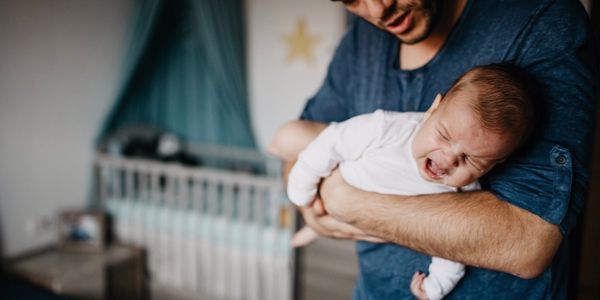Ensuring your baby gets a good night's sleep is a priority for every parent, but it isn’t always easy. Sleep training is one way that some parents go about getting their little one to sleep well through the night. If you’re looking to sleep train your baby, here are some of the common sleep training methods explained and broken down.
Bear in mind when attempting these methods that any major disruptions might be the sign of a sleep regression. Head here for more on what causes sleep regressions.
Chair Method
One effective sleep training method is the Chair Method, which involves placing a chair next to your baby's cot during bedtime. In this approach to sleep training you’ll sit near the baby while they fall asleep, providing a sense of comfort. Over several nights, gradually move the chair further away until your little one no longer relies on the physical presence of you in the room to be able sleep.
The Chair Method combines the reassurance of proximity with the encouragement of gentle self-soothing. This gentle transition allows your little one to build confidence in their ability to sleep independently while maintaining a connection with you that doesn’t leave them feeling alone.
Head here for tips on sleep training from a sleep expert!
Pick Up/Put Down Method: Reassurance with Independence
The Pick Up/Put Down Method is a popular sleep training technique that focuses on reassuring your baby to make them feel safe enough to go back to sleep. When your baby cries, pick them up to soothe them, but put them back down in their bed before they fall asleep. Head here for more on how to soothe a crying baby. The repetitive nature of this process helps them feel secure while gradually fostering the skill of independent sleep.
The goal of the Pick Up/Put Down Method is to strike a balance between providing comfort and promoting self-soothing abilities. By consistently repeating the cycle, parents guide their babies toward the ability to doze off without constant intervention.
Shower of Kisses Method
The Shower of Kisses Method adds a touch of affection to the sleep training process. In this approach, parents shower their baby with gentle kisses while the baby is still awake but settling down for sleep. Reassure them that you’ll be back soon to give them another kiss.
Gradually walk away from them, and then go back and give them another kiss. Again, reassure them that you’ll be back in another minute to give them another kiss. As your little one becomes drowsy, gradually increate the time between each time you give them a kiss.
This method helps create a positive association around bedtime, providing a comforting routine for your little one. Over time, the Shower of Kisses Method aids in the development of self-soothing skills as your baby learns to associate the bedtime routine with feelings of security and love.
Scheduled Awakening Method
The Scheduled Awakening sleep training method involves waking the baby at scheduled intervals during the night. We know, waking a sleeping baby seems crazy! But, if you know that they wake up at a similar time each night, try waking them up around 10 minutes before this time and let them doze back off. Every few days you can bring the wake time forward by around 10 minutes. By doing so, you’re disrupting their sleep cycle intentionally, meaning they don’t wake up again of their own accord.
Gradually extending the intervals between awakenings, you can help them to establish a more consistent and independent sleep pattern. The Scheduled Awakening Method is designed to teach babies to self-soothe in response to nighttime disruptions, ultimately contributing to longer sleep periods.
Bedtime Fading Method
The Bedtime Fading Method focuses on gradually adjusting your baby's bedtime to find the right time. This is a good choice if your little one is wide awake for a long time before falling asleep. Wait until you spot the signs of tiredness and then put them to bed.
Once you have found the sweet spot and had a few successful nights, even if later than you’d like, you can then start gradually bringing this bedtime earlier to the desired time. This method helps regulate your baby's internal clock and promotes a smoother transition to falling asleep independently.
By making small adjustments over time, the Bedtime Fading Method minimises disruptions to the sleep routine and avoids long wake periods after going to bed. The gradual approach allows your little one to naturally acclimate to a new bedtime.





